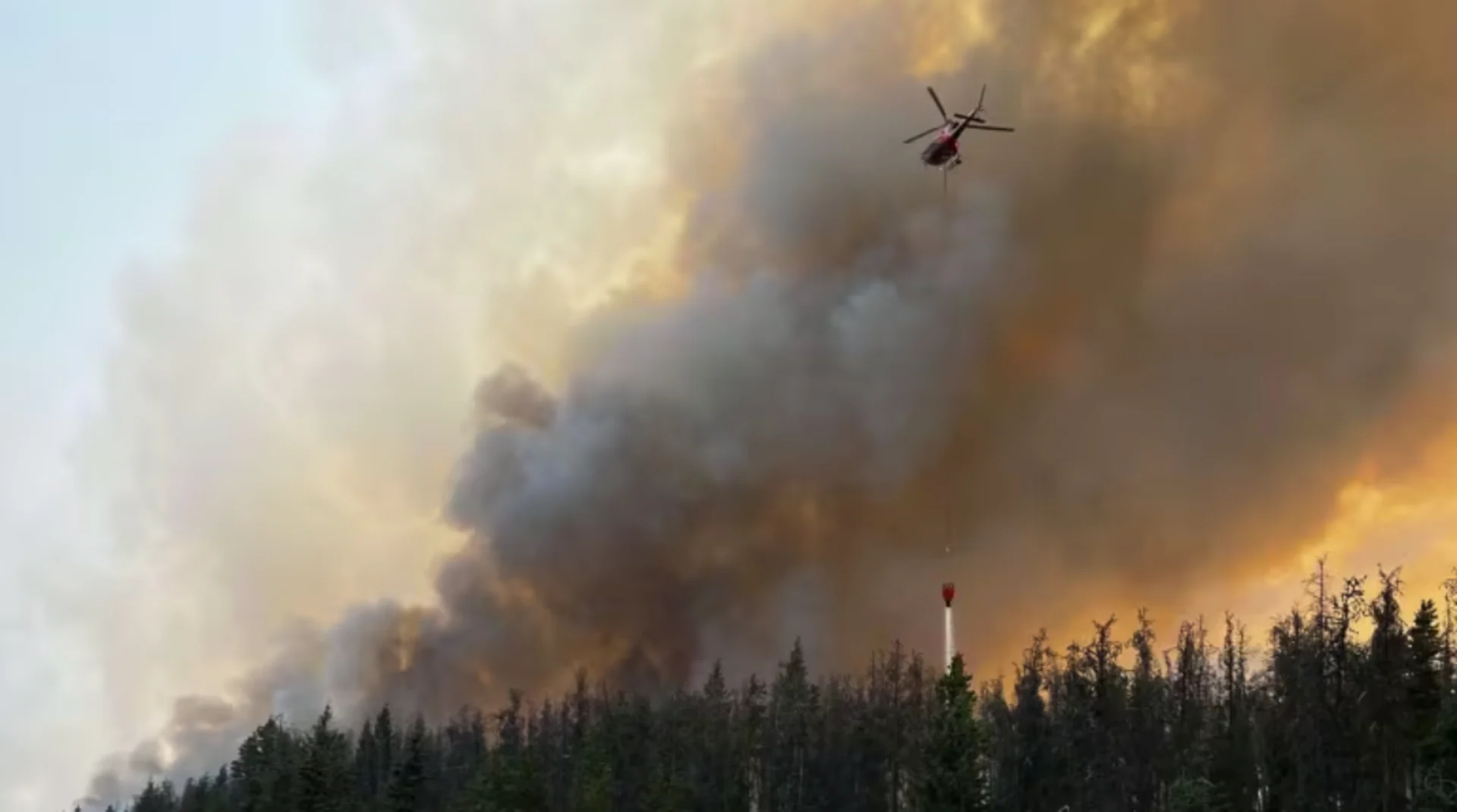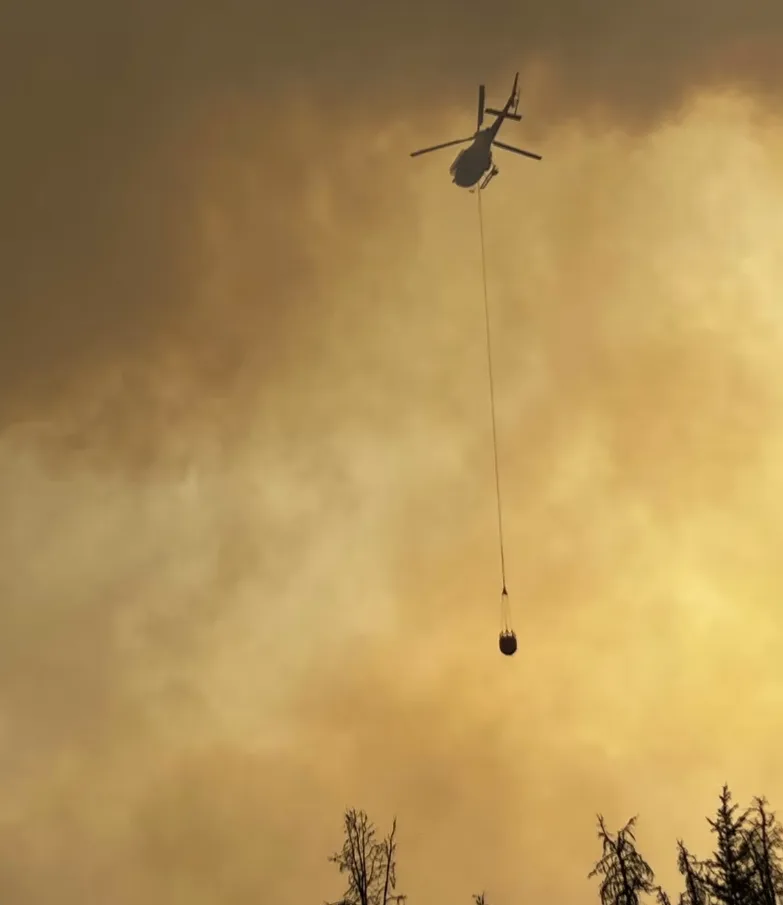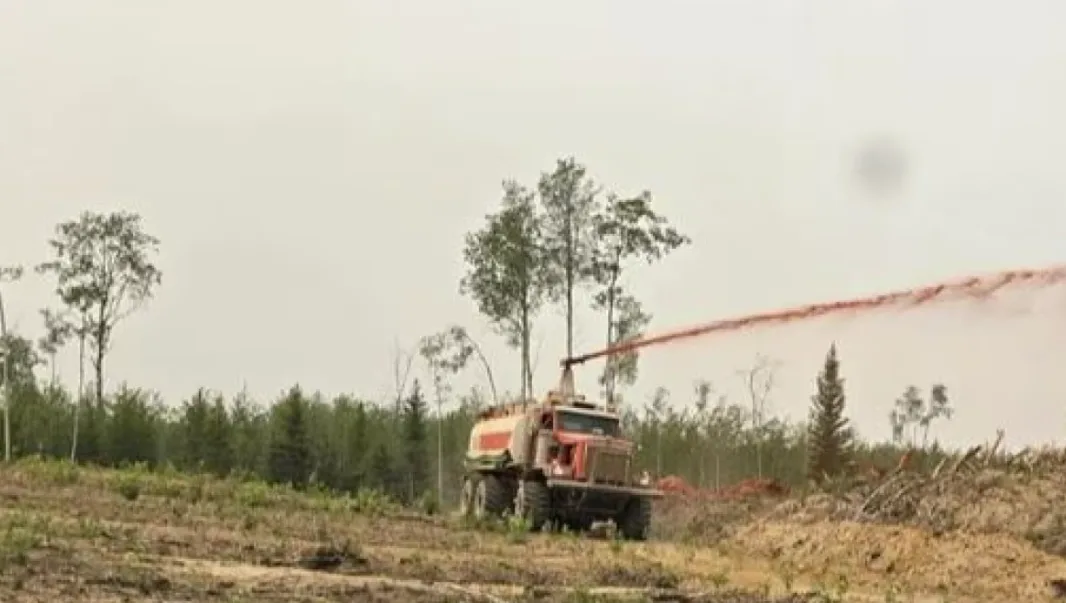
Wildfire that forced evacuation of Jasper park now within 12 km of townsite
An encroaching wildfire that forced thousands of people to flee the community of Jasper overnight is now burning 12 kilometres south of the Alberta mountain town as shifting winds threaten to fan the flames.
Government officials say at least 10,000 residents and visitors were forced to evacuate from Jasper National Park after a wildfire roared into the area late Monday night.
Parks Canada is responding to multiple wildfires in the park in what it called "an evolving and dynamic situation."
CANADA'S WILDFIRES: Visit The Weather Network's wildfire hub to keep up with the latest on the active wildfire season across Canada.
With little notice, people were forced to flee west over mountain roads into British Columbia, through darkness, soot and ash.
"One fire is approximately 12 kilometres south of Jasper on both sides of the river and wind may exacerbate the situation," Mike Ellis, Alberta's minister of public safety and emergency services, said during a news conference Tuesday.
Provincial officials are working closely with municipal and Parks Canada officials to help contain the fire and manage the evacuation, Ellis said.
Hospitals and long-term care facilities in Jasper have been evacuated and RCMP officers have been knocking on doors to ensure residents under evacuation have left their homes.
Ellis urged evacuees to abide by instructions from emergency officials and register with provincial emergency evacuation centres.
He said all Albertans should take precautions and be prepared for the possibility for evacuation as the risk of fire remains extreme across the province.
"Wildfire directions can change quickly and the situations are often rapidly evolving," Ellis said.
Christie Tucker with Alberta Wildfire said the danger across the province remains extreme. Following weeks of parched weather and scorching heat, fire crews are preparing for challenging conditions Tuesday.

A helicopter involved in the firefighting effort in Jasper on Monday. (Submitted by Trina Pelland Taylor)
Alberta has 170 active wildfires, with more than 50 classified as out-of-control.
A cold front moving in from the west will create volatile weather for crews across the province, Tucker said.
"The winds are going to shift," she said. "This will change the intensity of several of the wildfires in Alberta, as well as the direction that they may be moving."
Tucker said additional resources have been deployed to Jasper and more crews are on standby. Officials said lightning is likely the cause of the fire threatening Jasper.
As orders to leave were issued overnight, highways out of the mountain community soon became jammed with traffic.
Photos and video shared on social media overnight depicted a long line of cars and trucks, headlights on, red tail lights blinking, heading out bumper-to bumper as the night sky darkened.
Fires threatening from the northeast cut off Highway 16 access east to Edmonton. Another fire roaring up from the south forced the closure of the north-south Icefields Parkway. That left one route open — west to B.C.
The evacuation alert was sent just after 10 p.m. MT. The Municipality of Jasper declared a state of emergency shortly after.
Park and town officials scrambled to clear up traffic gridlock, find fuel for vehicles and help vulnerable people get to safety while also marshalling resources to battle the fires.
Canadian National Railway has suspended rail service through Jasper National Park, CN said in a statement. Crews are working to inspect and protect track infrastructure, but no track damage has been reported, the company said.
SEE ALSO: Best practices to keep yourself safe from wildfire smoke
CN said Trident, one of its firefighting trains, arrived in Jasper early Tuesday.
Confusion over messaging
Alberta Emergency Alert initially said residents had to flee because the fire was five hours from the Jasper townsite, but an hour later corrected that to say people had five hours to get out — meaning they had to be out by 3 a.m. MT Tuesday.

A truck sprays fire retardant in a forested area near Garden River, Alta., one of the communities threatened by the Semo Wildfire Complex. (Alberta Wildfire)
Ellis said he and Premier Danielle Smith have spoken about the confusion around the evacuation order.
He said the information came from the municipality, and that the province will be following up with municipal officials to understand what happened and prevent similar issues in the future.
"I think there were a lot of people who were scared," he said. "And I know that when myself and the premier discussed it late, late last night, we were of course concerned as to what was happening in the town of Jasper and what, indeed, was the risk."
It was a long anxious night on the road as vehicles clogged routes out of the community.
Stephanie Goertz, who was visiting on a family vacation from Ontario, woke to the alert on her phone. She and her husband scrambled to wake their two young children and pack their belongings.
Goertz said her family attempted to flee west but were redirected east by emergency officials and drove through the fire zone where roaring flames were visible.
WATCH: It's wildfire season, pack your 'grab-and-go' box with these items
"It was absolutely shocking. We didn't realize how close it was to Jasper," she said. "When we were stopped, there was tons of cars behind us. And really realizing how close those cars had been to that fire ... There's a much larger fire south of us. I can't imagine how that's going to impact Jasper."
She said her family was heading toward Canmore, east of Banff, but with traffic clogging the highways, they didn't expect they would make the drive in one night.
"I don't think we're gonna get there," she said. "Our kids didn't fall asleep until 3:30 because they were just too anxious with the fire. So were we."
Jessica Jackson, her husband and two young children — six and three — fled their home in Jasper overnight. She said it took them two hours to drive the three blocks from their home to the highway as vehicles clogged local streets and smoke choked the sky.
"I was getting my kids ready for bed and getting teeth brushed," she recalled.
"I looked out the window and there was dark, fresh smoke billowing in the air. Ash was falling and at that point, we just knew we had to start getting packed."
Jackson and her family made their way to Valemount where they spent the night parked on a friend's property, sleeping in their camping trailer.
"It was a late, late night last night but we're just grateful to be safe and that our family's together."
Difficult to find accommodations
In B.C., the province scrambled to find accommodation for evacuees.
"B.C. will do everything we can to provide safe refuge for evacuees from Jasper, and are working as quickly as possible to co-ordinate routes and arrange host communities on our side of the border," Bowinn Ma, B.C.'s minister for emergency management, said in a post on the social media site X.
A welcome centre set up at a community hall in the B.C. village of Valemount had reached capacity by 4:30 a.m.
"Valemount has limited services and cannot accommodate more evacuees at the community hall," a social media post from the Municipality of Jasper read.
"If you are on the road, please drive carefully and stop and get some rest as needed.
"This is an evolving emergency situation. Please be patient and be safe. We will provide more information as it becomes available."
In Grande Prairie, a reception centre at Bonnetts Energy Centre was to open at 9 a.m. Tuesday.
In Calgary, a reception centre at the Shouldice Athletic Park will open at 11 a.m.
The City of Edmonton is also accepting evacuees at Kennedale Site, Building No. 2, at 12814 58th St., starting at 2 p.m. Tuesday. Services will include co-ordination of lodging and funding for food, water, clothing and hygiene items, pet day care and health care. Support will be available 24 hours a day, the city said.
Parks Canada said evacuations had taken place at numerous campgrounds, as well as the Athabasca Hostel and the Palisades Stewardship and Education Centre.
The legion in Valemount has opened its doors to evacuees, said Pete Pearson, a village councillor and legion president. The first evacuees began arriving around midnight and by morning, there was a crowd, he said.
"I've got probably about 24 people sleeping on the floor from various countries and a few Jasper locals," he said. "And we're just getting ready to get breakfast going and start serving as many breakfasts as we can."
Pearson said he opened the legion doors and put on coffee for people coming in from the road. Evacuees were anxious and exhausted after driving all night through the smoke and flames, he said.
He said Valemount, a community of about 1,000 people, is ready to host as many evacuees as it can handle.
"It's going to be a challenge but several organizations are stepping up," he said. "I'll cook pancakes until I run out."
According to Alberta Wildfire Status Dashboard, there are 170 active wildfires burning across the province as of Tuesday morning.
Environment Canada said cooler temperatures were expected to start moving into northwestern parts of the province starting Monday night, though hot conditions may persist through much of the week farther south.
Thumbnail image credit to Trina Pelland Taylor via CBC News.
This article, written by Wallis Snowdon, was originally published for CBC News. It contains files from The Canadian Press, Trevor Howlett, Mrinali Anchan, Liam Harrap.










